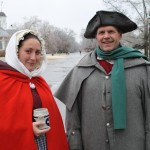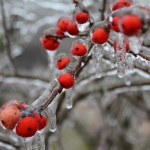 Written documents suggest there were probably few, if any, street trees planted in the colonial capital. Surviving accounts by eighteenth-century visitors contain comments about the sandy, dusty streets that were here at that time (see below). Other comments refer to the ability to see Williamsburg from a great distance, and of the city being situated upon an “open plain.”
Written documents suggest there were probably few, if any, street trees planted in the colonial capital. Surviving accounts by eighteenth-century visitors contain comments about the sandy, dusty streets that were here at that time (see below). Other comments refer to the ability to see Williamsburg from a great distance, and of the city being situated upon an “open plain.”
This evidence, however, does not indicate that no large trees existed in the city. Some trees would have probably been left to grow in the town’s ravines, and a 1782 map of Williamsburg drawn by an unknown Frenchman indicates trees equally spaced along the Palace Green. However, most trees found in eighteenth-century Williamsburg were most likely small fruit trees grown in back lots and orchards.
Accounts of the early Williamsburg landscape:
“. . . There is one handsome street in it [Williamsburg], just a mile in length, where the view is terminated by a commanding object each way. . . . is very disagreeable to walk in, especially in summer, when the rays of the sun are intensely hot, and not a little increased by the reflection of the white sand, wherein every step is almost above the shoe, and where there is no shade or shelter to walk under, unless you carry an umbrella. . .” John F. D. Smyth - 1770
“22 Oct. . . . A short account of Williamsburg: This city consists of approximately 300 houses, and is fairly built up for a mile in length. The city lies upon an agreeable open plain. While it is not, it is true, so very large, one may nevertheless count it among the most beautiful cities of America.” Johann Conrad Doehla - 1781
“. . . .The place [Williamsburg] lies in a pleasant, open plain, and even from a distance commends itself to the traveller by a particularly cheerful and stately appearance, and the impression is confirmed on entering the town. One may count this among the handsomer towns of America, even if not among the larger, the number of houses being only about 230.” Johann David Schoepf - 1783




Leave a Reply